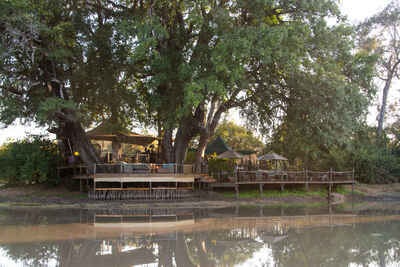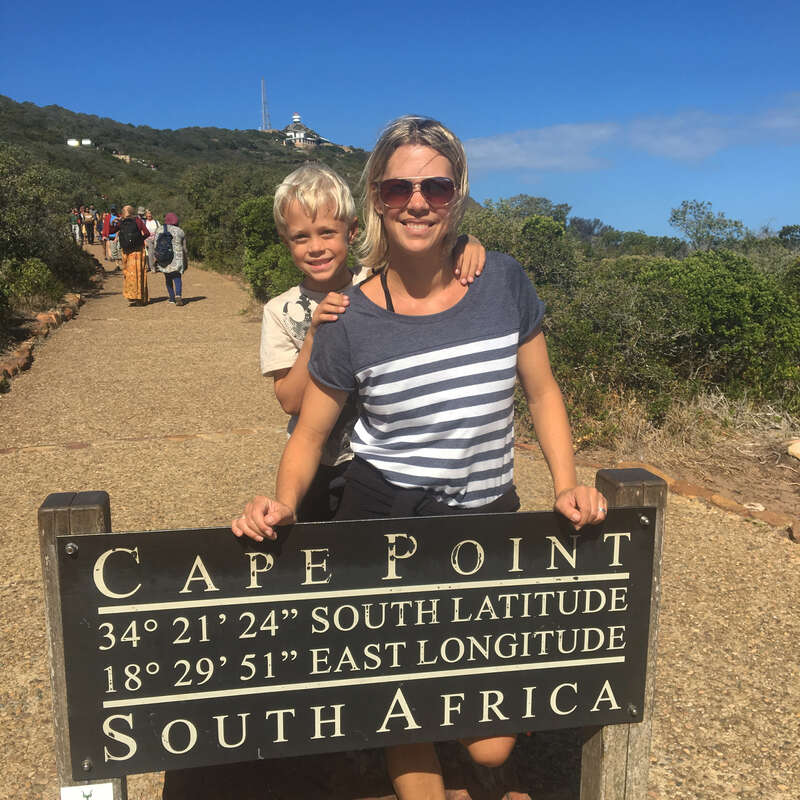About Kanga Bush Camp
Kanga Camp combines top-quality guiding with a remote location by a prolific waterhole in Mana Pools National Park.
Hidden away in Mana Pools, Kanga Bush Camp is an ideal spot for wildlife watching in relative seclusion.
Indeed, with animals attracted year round to the permanent Kanga Pan in front of camp, there’s hardly any need to head out on activities. Instead, cosy up on the deck for an “armchair safari” and stand by as elephants, zebra, antelope and their predators process down to the water to drink.
Of course there are other options, starting with a simple hide at eye level with the pan. You can stretch your legs on a walking safari, too, led by a top-notch guide – or head out on a 4WD for the Zambezi River for a very different feel.
Back at camp, retire to your spacious tented chalet, where traditional storm lanterns and an open-air bathroom bring a hint of old-style safari to contemporary comforts. Keep an eye on the pan from your veranda, or join in the chatter around the firepit to discuss the day’s events; either way, the animals are rarely far away.
Our view
Kanga Bush Camp combines seclusion with luxury, and a hint of the raw experience of camping in a wilderness area. Set in a different environment to most of Mana Pools’ other camps, which are beside the river, it offers an alternative take on a safari here. Come to Kanga for three nights or more and have time for a full day safari down to the waterfront, or stay for a shorter time in combination with one of Mana's riverfront camps and use it as a place to relax and unwind on an armchair safari.
Accommodation
6 chalets
Children
Best for 12+
Open
Apr - Oct
Activities

4WD Safari

Birdwatching

Guided walking safari

Private activities
Traveller reviews of Kanga Bush Camp
17 real, un-edited reviews from Expert Africa's travellers.
Arrived 18 May 2024, 3 nights
"Kanga Bush Camp review"
Overall rating: Excellent
Arrived 5 Sep 2022, 3 nights
"Kanga Bush Camp review"
Overall rating: Average
Arrived 30 Apr 2022, 3 nights
"Kanga Bush Camp review"
Overall rating: Excellent
Arrived 13 Sep 2017, 3 nights
"Peace and quiet in Mana pools"
Overall rating: Excellent
Arrived 8 Sep 2014, 3 nights
"Where the wilderness comes to you"
Overall rating: Excellent
Arrived 1 Sep 2014, 3 nights
"Kanga Bush Camp review"
Overall rating: Good
Arrived 19 Jul 2014, 3 nights
"They call it"
Overall rating: Good
Arrived 22 Oct 2013, 2 nights
"Kanga, where you gamewatch from your bathroom"
Overall rating: Excellent
Arrived 29 Aug 2013, 4 nights
"Fabulous at Kanga et Zambezi Lifestyle"
Overall rating: Excellent
Arrived 20 Sep 2012, 4 nights
"A treasure trove in Mana Pools"
Overall rating: Excellent
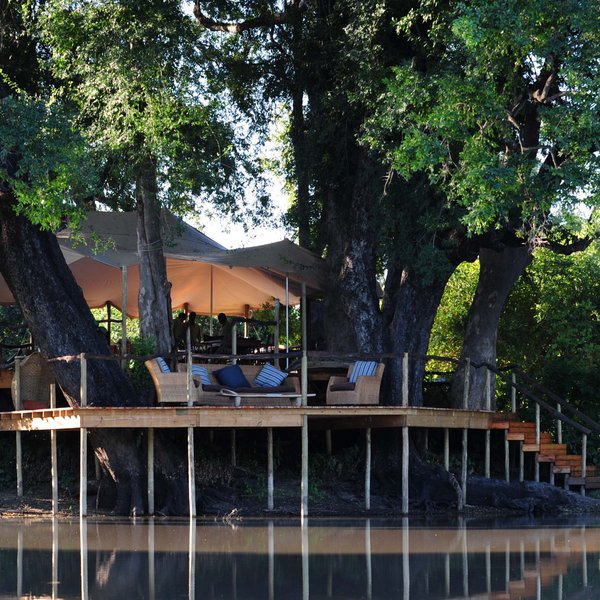
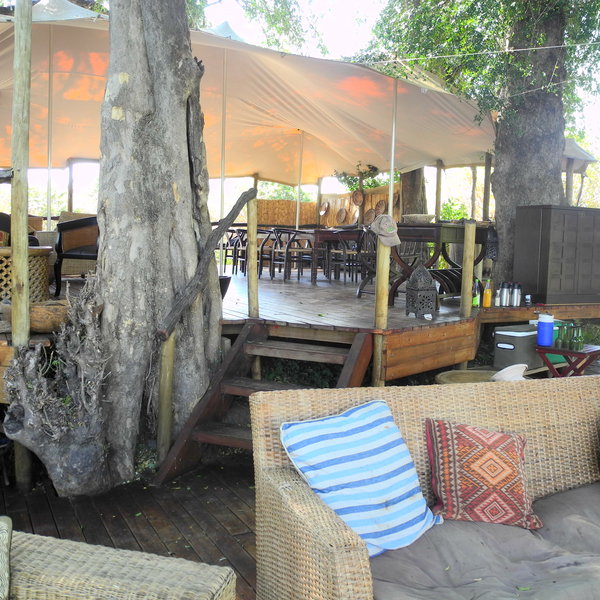
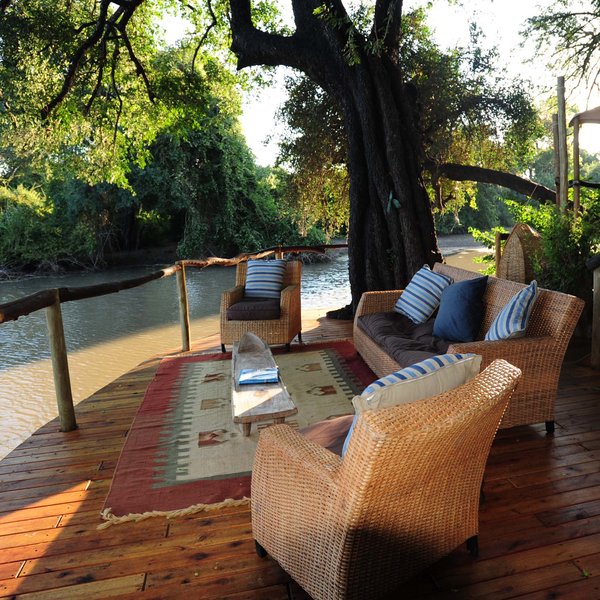
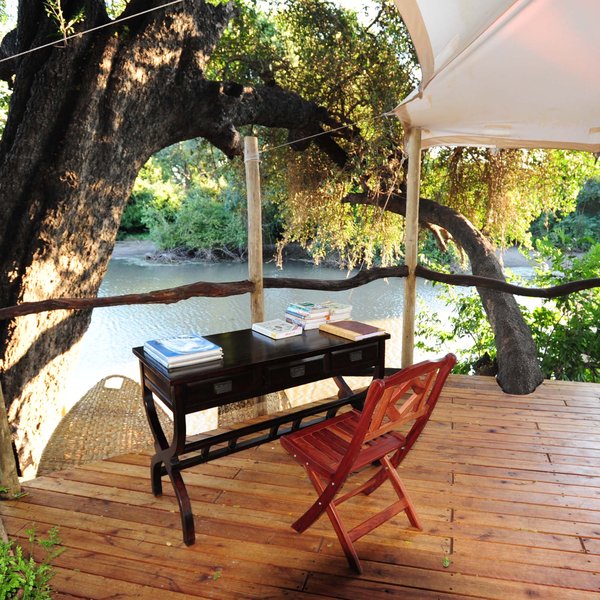
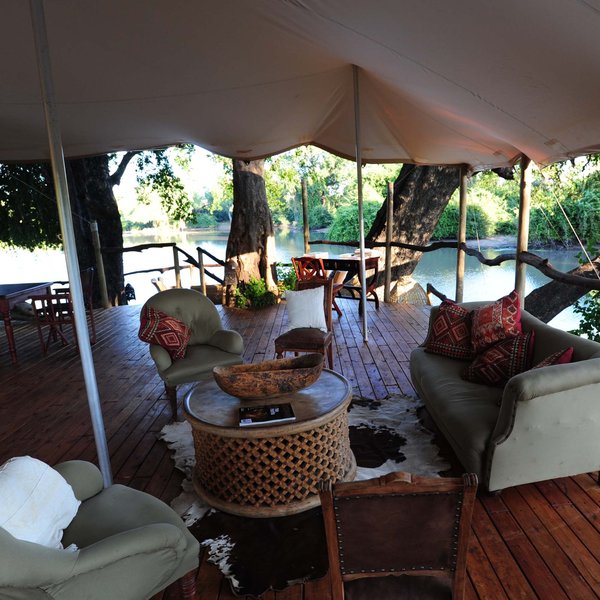
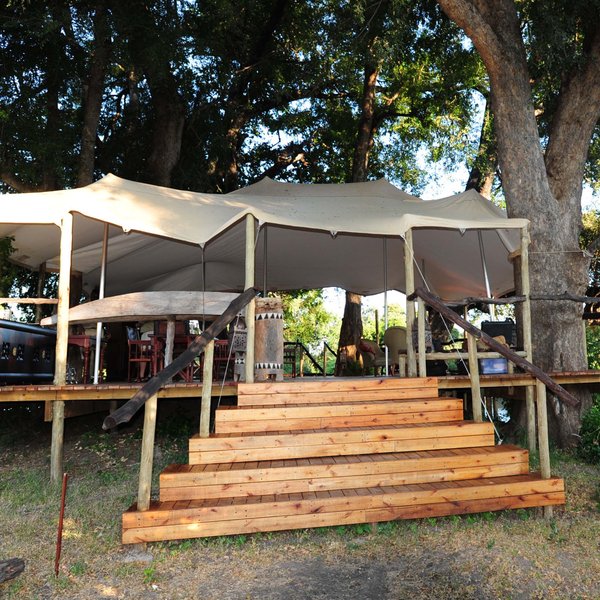
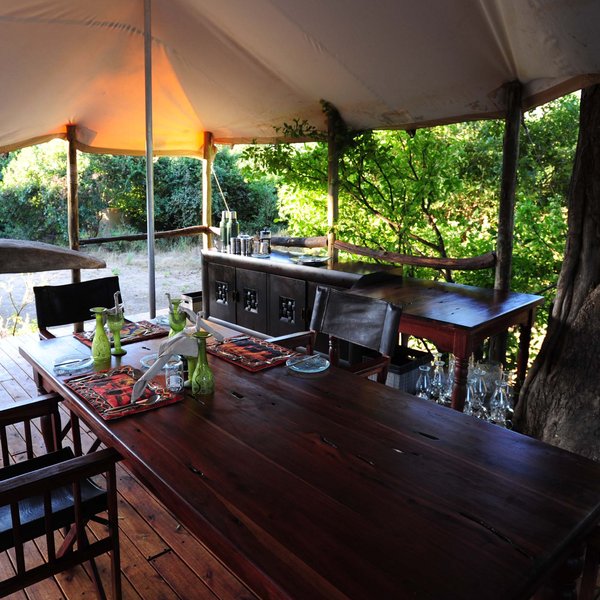
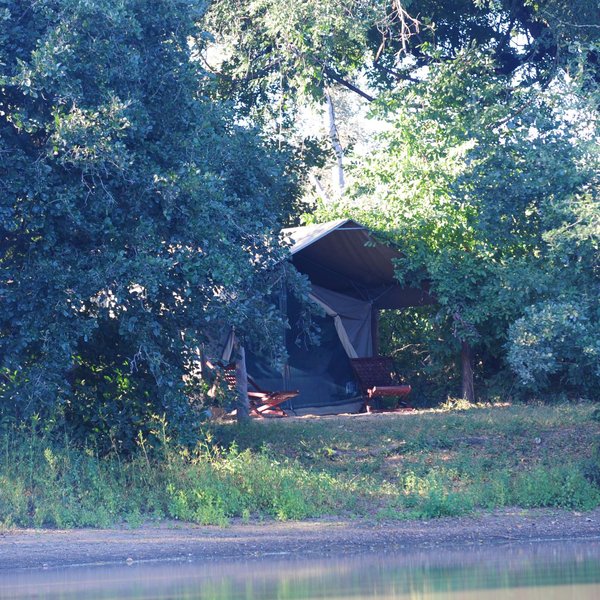
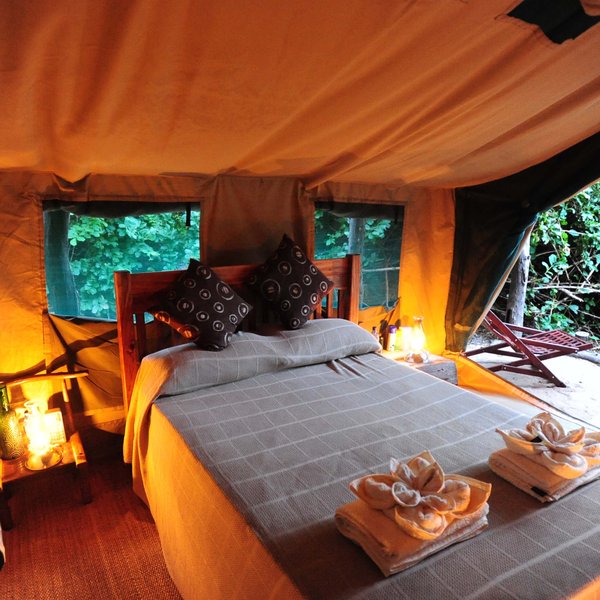
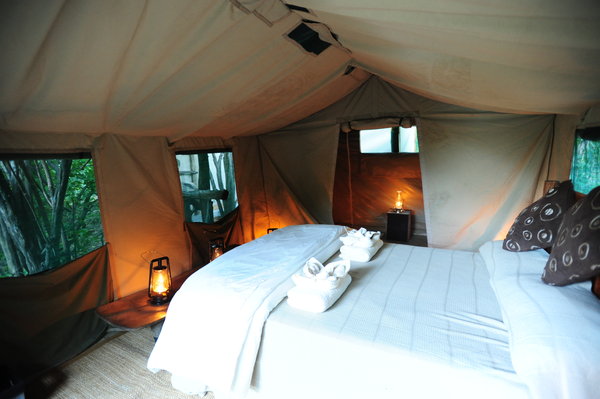
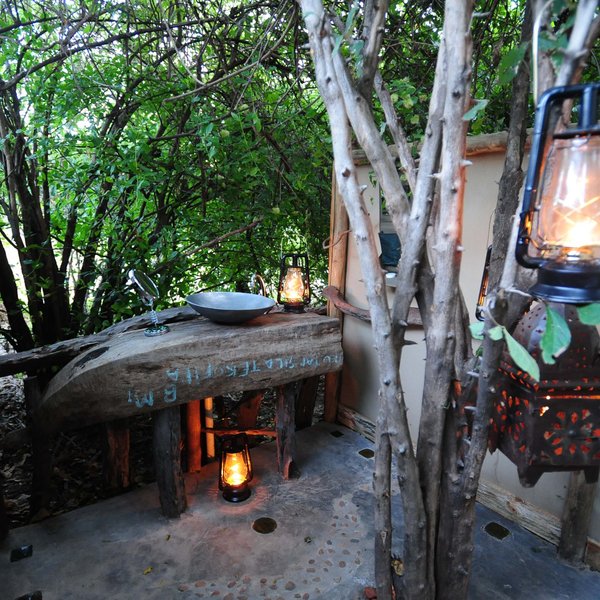
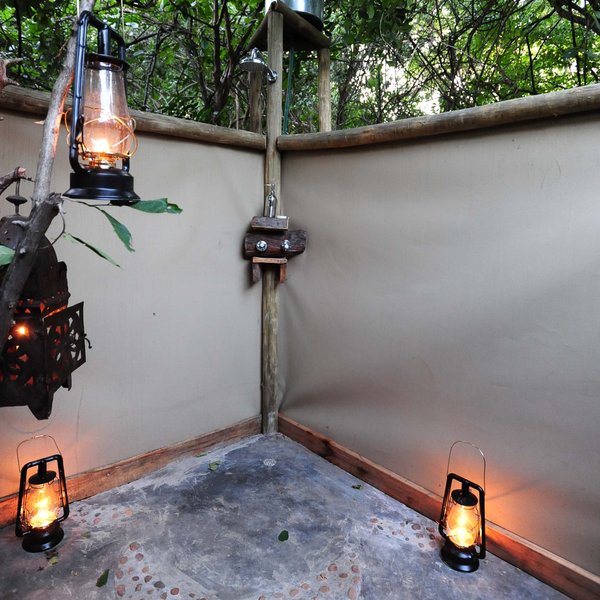
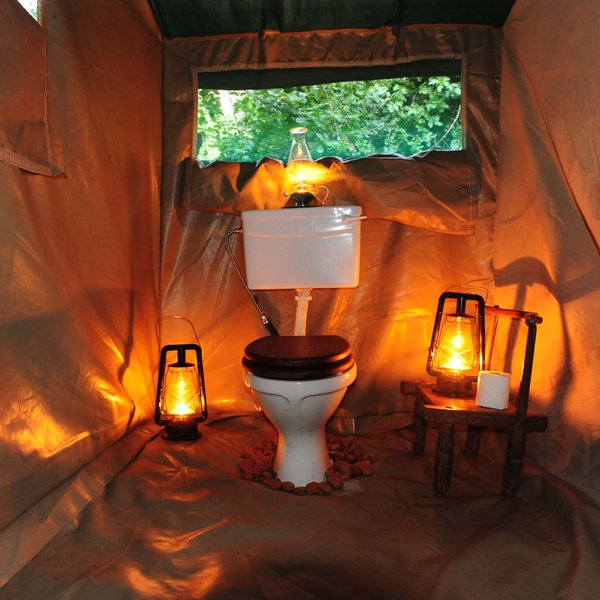
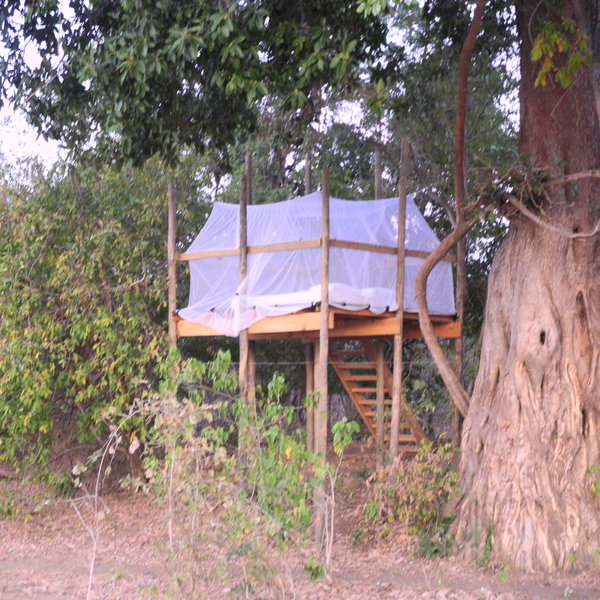
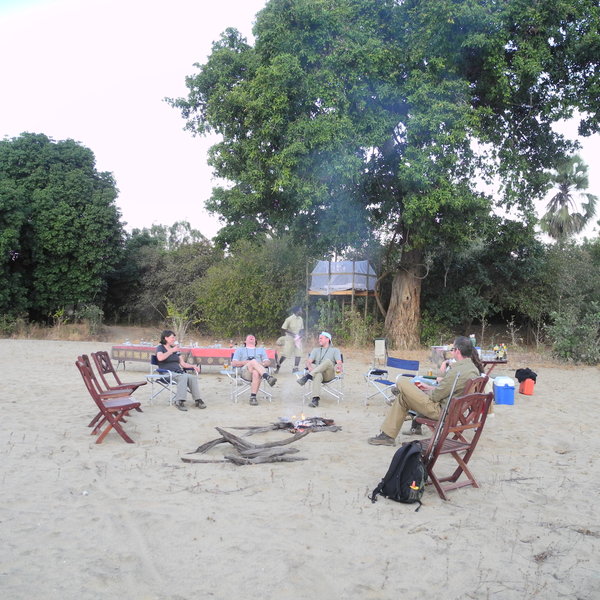
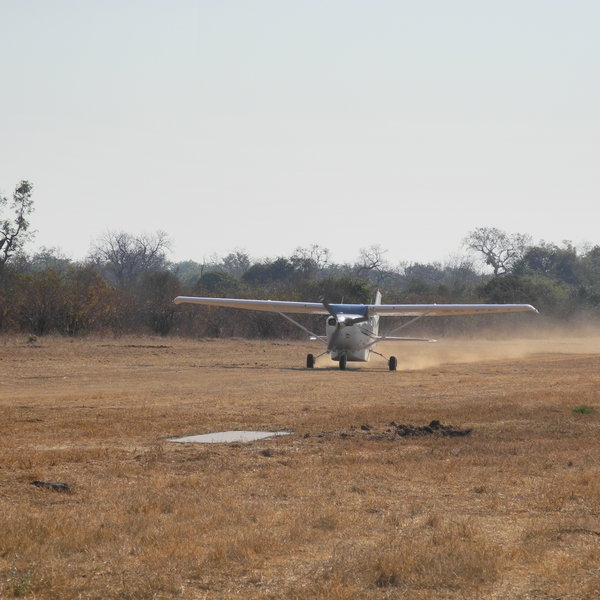
Expert Africa's gallery
When we travel we take lots of photos ourselves to give you a real and un-edited view of the safaris. See our 34 pictures and 1 videos of Kanga Bush Camp to get the candid view.
View gallerySafaris visiting Kanga Bush Camp
Just ideas, we'll always tailor-make a trip for you
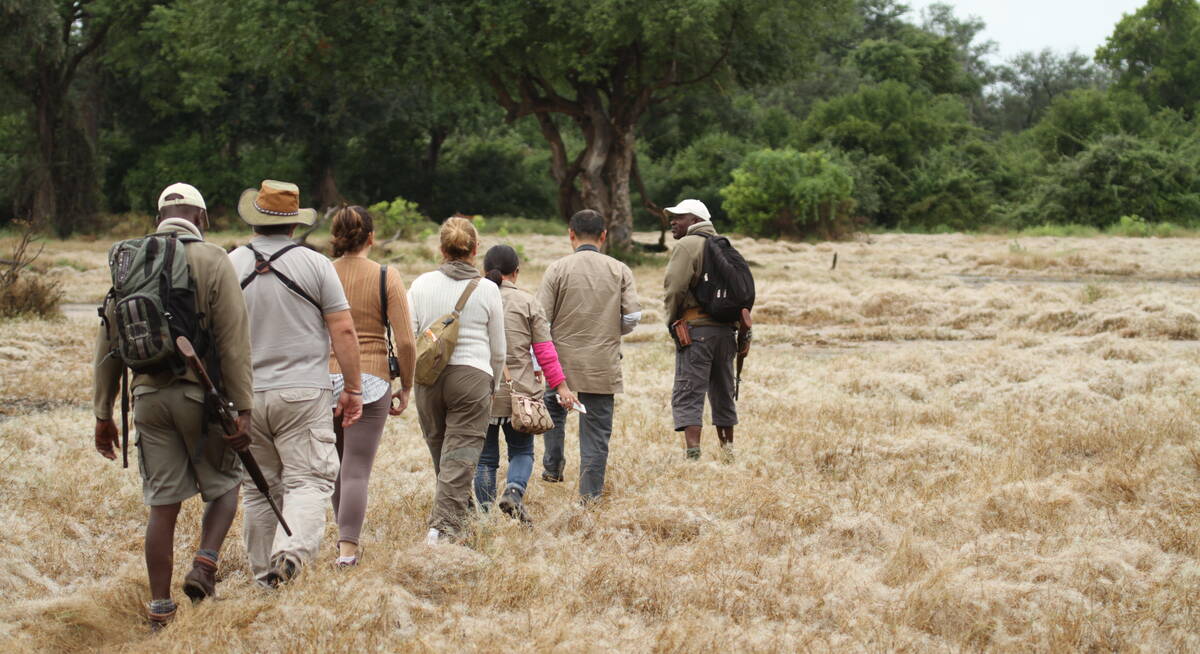
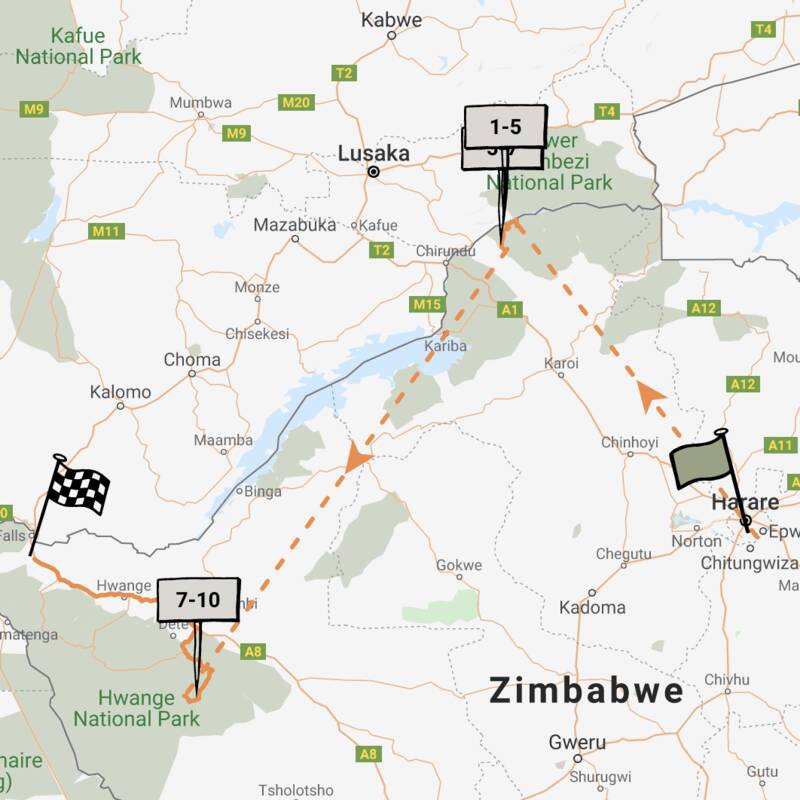
Buffalo Safari
9 days • 3 locations • 1 country
HARARE AIRPORT TO VICTORIA FALLS AIRPORT
Combining Zimbabwe’s Mana Pools and Hwange national parks with stays at intimate six-tent safari camps offering excellent walking, canoeing and game drives. Superb wildlife viewing and a real wilderness-focused experience.
Visiting Mana Pools, Hwange
US$8,840 - US$11,910 per person
Kanga Bush Camp: Our full report
Situated in one of the most remote parts of Zimbabwe’s Mana Pools National Park, Kanga Camp lies next to ...
... the isolated Kanga Pan. While most other camps in the park line the Zambezi River, Kanga is about 15km away (as the eagle flies), and has a rather different, more exclusive feel.
During the safari season in Mana Pools National Park (April to November), the wildlife tends to move towards the permanent Zambezi River to find a reliable water source. Taking advantage of this game-rich area, the majority of camps in the park have been constructed along the riverbank, but Kanga Camp has taken a different approach. The property lies in the bush next to the eponymous Kanga Pan, which is the only source of water in the area. As surface water dries up, the pumped waterhole entices game from the parched surrounding regions, providing superb game viewing in a largely exclusive environment.
Having been upgraded from a simple bushcamp in 2011, Kanga Camp now consists of six tented chalets, raised on wooden platforms and set discreetly around the edge of the pan. Far from the traditional image of a “tent”, these are solidly built structures with substantial timber frames supporting canvas walls and roofs, and floor-to-ceiling mesh windows allowing in natural light. In the evening, solar lights supplement the traditional storm lanterns.
Inside, large double or twin beds form the centrepiece of each tented chalet. A canvas partition separates the bedroom from a small storage area with wooded shelving and a hanging rail. It also provides additional privacy for the outdoor en-suite bathroom, which is accessed through zipped shade-mesh doors at the back of the tent. Here, head-height reed walls surround a shower, washbasin, large mirror, and a flush toilet hidden behind a section of wall.
Kanga's chalets include a honeymoon suite, which has the bonus of a large, free-standing bath in a private annexe, and – furthest from the main area – a family chalet, which has a particularly secluded outside shower and bath. This family chalet is larger than the others, and as well as a double bed it has two sofas that convert into single beds for children. It also features a small seating area and an extensive balcony that leads right round the side and front of the chalet, offering fantastic views of the pan.
Kanga Bush Camp's main communal area is elevated on a series of split-level, stylish wooden platforms under a large stretched-canvas roof. This is where the bar and lounge area are found, as well as a good selection of books, and some comfy hideaway corners in which to while away the afternoon. Steps lead down to another deck where there is a dining table and a firepit surrounded by camp chairs: a great area to discuss the day's events before and after dinner.
On an adjacent level, jutting out over the edge of the pan, another deck is set with comfortable chairs and sofas, making a very pleasant spot for an “armchair safari”. On our last visit to Kanga in October 2018 we saw an almost constant procession of elephants, zebra, impala, kudu and baboons coming down to drink during the day, followed by lion, civet and hyena after the sun had set. Beneath this deck is a rudimentary hide, complete with fold-up chairs, which offers an eye-level if rather cramped view of the waterhole. During our stay the hide was also playing host to wildlife documentary makers who provided some interesting insights into the action.
Completing the facilities at Kanga is a small plunge pool with a couple of sunloungers and umbrellas.
When it comes to activities, this bushcamp specialises in walking safaris lead by top-level professional guides. Game drives in open 4WD vehicles in both the early morning and the evening are also available – as are all-day drives in the area beside the Zambezi. As an added bonus, Kanga is permitted to conduct night drives on their concession.
The game that comes to Kanga Pan is superb, particularly towards the end of the dry season, so this is genuinely a great property to sit and chill around camp for a day. Equally, the whole-day drives to the Zambezi riverfront area can be excellent, although these are less popular towards the end of the dry season (October–November), when midday temperatures can soar. However, we've found that the shorter morning and evening drives, in the thick bush in the vicinity of camp, are much less productive, and can even be disappointing. Because of this we usually recommend Kanga in combination with a few nights at a riverfront camp, allowing guests to get a feel for two very different areas of the park. An obvious choice would be its sister camp, Zambezi Expeditions, which would allow guests to explore the riverfront in more detail and also to enjoy fishing or canoeing activities.
Activities
4WD Safari
Birdwatching
Guided walking safari
Private activities
Families & children
- Attitude towards children
- Kanga does not accept children under twelve years of age.
- Property’s age restrictions
- Children over the age of 12 years are welcome at Kanga Camp. However, walking safaris are restricted to children aged 16 years and over.
- Special activities & services
- None
- Equipment
- None
- Generally recommended for children
- Given the adult ambience of Kanga and the amount of dangerous game in the area, Expert Africa doesn't recommend Kanga Camp for children under about 12.
- Notes
- This is a very open safari camp, with big game passing through regularly. Children must be supervised by a parent or guardian at all times.
Food & drink
- Usual board basis
- Full Board & Activities
- Food quality
- During our stay in October 2018, as on previous visits, we found the food at Kanga to be of a high standard. We understand that with advance notice most dietary needs can be catered for.
A light continental breakfast is offered around the campfire before the first activity of the day. This usually consists of porridge (kept warm over the fire), cereals, fresh fruit, cold meats and cheeses, and toast, with tea, coffee and juice.
Lunch is served on returning from the morning activity (usually at about 11.30am). We enjoyed “building” our own burgers with fillings including onions, cheese, bacon, beef burgers, cucumber, salad and more. This was followed by simple but delicious chocolate ice cream.
A substantial high tea is served in the late afternoon. On our visit we enjoyed feta and spinach puff-pastry parcels, and a mixed berry cake.
Following the afternoon activity, drinks around the fire are followed by a three-course dinner. We had a starter of leek and potato soup with fresh bread rolls, followed by pork chops with roasted vegetables, Greek salad and a butternut and avocado salad. On cold winter evenings dessert is generally served around the fire and there is also the option of cheese and biscuits. We enjoyed profiteroles with crème caramel, which rounded off our meal very well indeed. - Dining style
- Mixture of group dining and individual tables
- Dining locations
- Indoor and Outdoor Dining
- Further dining info, including room service
- Room service is not available
- Drinks included
- Drinks are usually included at Kanga, but fine wines and spirits are charged extra.
Jugs of filtered drinking water are provided in the tented chalets, and water bottles can be refilled with filtered water in the main area. Bottled drinking water is also available on request.
Our travellers’ wildlife sightings from Kanga Bush Camp
Since mid-2018, many of our travellers who stayed at Kanga Bush Camp have kindly recorded their wildlife sightings and shared them with us. The results are below. Click an animal to see more, and here to see more on our methodology.

100% success

100% success

100% success

100% success

100% success

50% success

50% success

0% success

0% success

0% success

0% success

0% success

0% success

0% success

0% success
Getting there
- Location
- Mana Pools National Park, Zimbabwe
- Ideal length of stay
- Kanga works best as a 2–3-night stay in addition to time at another camp on the Zambezi riverfront. Alternatively, come for longer and explore the waterfront on full-day game drives.
- Directions
- Kanga Bush Camp is generally reached by light aircraft; The nearest airstrip is Dandawa, which is about 20 minutes' drive from the camp.
- Accessible by
- Fly-and-Transfer
Communications
- Power supply notes
- There is a back-up generator. Power for charging batteries is available in the main area 24 hours a day.
- Communications
- There is a radio link to other lodges, and email and Skype may be used in an emergency.
- TV & radio
- No
- Water supply
- Borehole
- Water supply notes
- All bathrooms at Kanga are plumbed in with flush toilets and hot and cold showers.
Health & safety
- Malarial protection recommended
- Yes
- Medical care
- The nearest doctor is in Kariba, a few hours' drive away. The nearest airstrip is 20 minutes' drive from Kanga, which makes an emergency evacuation much quicker.
In camp the management and guides are trained in first aid. - Dangerous animals
- High Risk
- Security measures
- The managers and guides sleep on site.
- Fire safety
- Fire extinguishers are dotted around camp.
Useful info
- Disabled access
- Not Possible
- Laundry facilities
- It is possible to have all laundry done at the camp and this is included in the rate. However, as underwear is not accepted, there is a pot of detergent in each chalet so guests can hand-wash smalls as required.
- Money
- There are no safes in the chalets at Kanga, but there is a safe in the main office.
- Accepted payment on location
- As most stays here are fully inclusive, there is little need to make payment, and there are no card facilities. Tips, and anything else are generally settled in US dollars cash.
Plan and book your trip with Expert Africa
All of our trips are tailor-made, so we'll always adapt them to suit you. Talk to an Expert and let us plan and arrange your perfect trip.

Talk to an Expert
Call or email us now! We’ll match you with the Specialist in our team who is best suited to help you. Then together we can start planning your trip.

Set up your itinerary
Based on our experience and your ideas, your specialist will create a detailed, costed itinerary. We’ll refine it together, until we have a trip that you’re perfectly happy with.

Prepare for your trip
The same Specialist will make the seamless arrangements for your trip, send you detailed travel documents, and be available to answer any questions before you depart.

Travel with peace of mind
After you set off, you’ll be cared for by our partners in Africa, most of whom have worked with Expert Africa for decades. And if you ever need us urgently, we’re available 24/7.

When you return
We love to learn about your trip, and so will always be grateful if you’ve the time to give feedback to your Specialist when you return.
Kanga Bush Camp's location
Look closer at the environment and surroundings of Kanga Bush Camp.
Other lodges in Mana Pools National Park
Alternative places to stay in this same area.
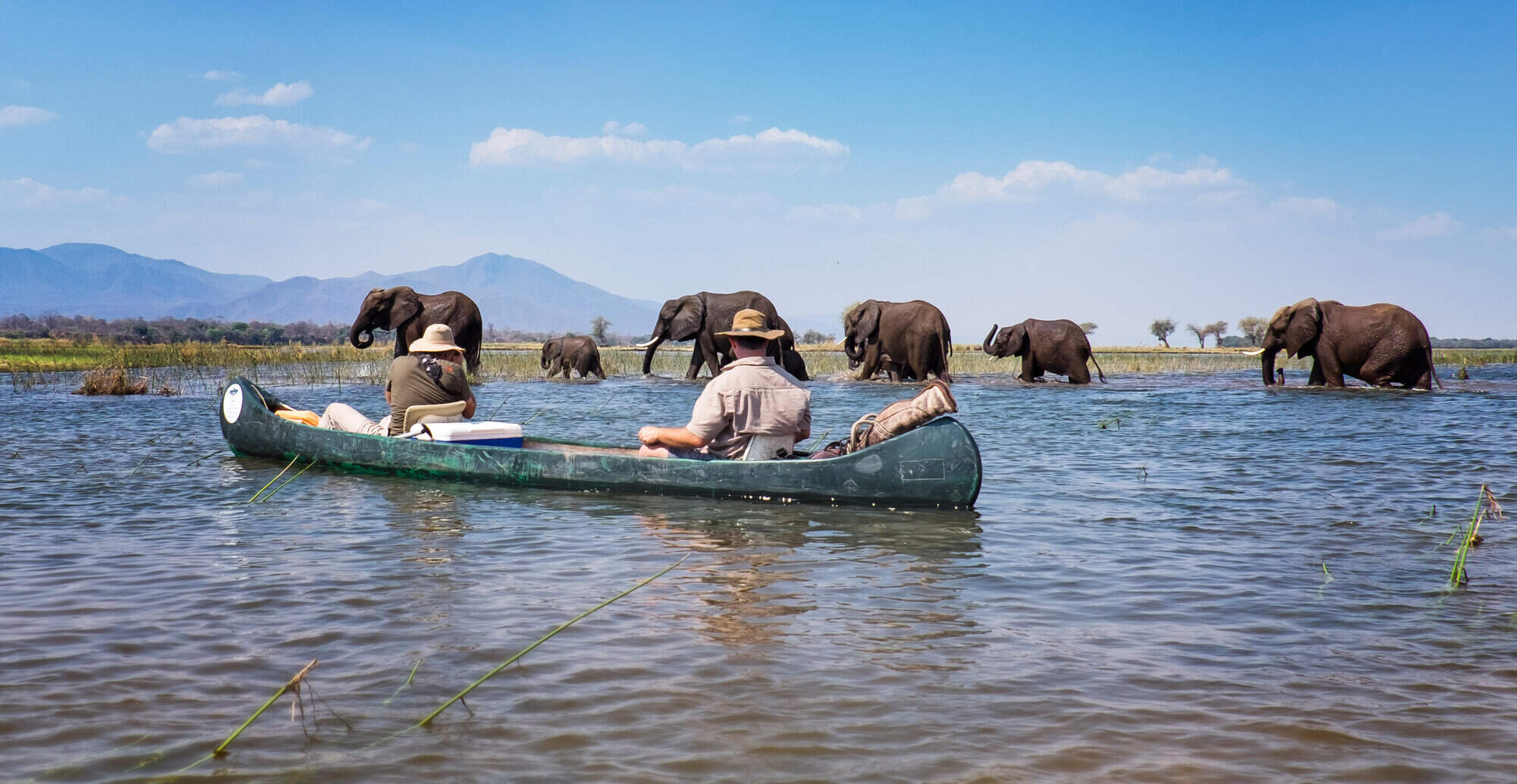
Vundu Camp
Overlooking the Zambezi River in Mana Pools National Park, Vundu Camp is a small, comfortable bushcamp offering top-notch guiding.
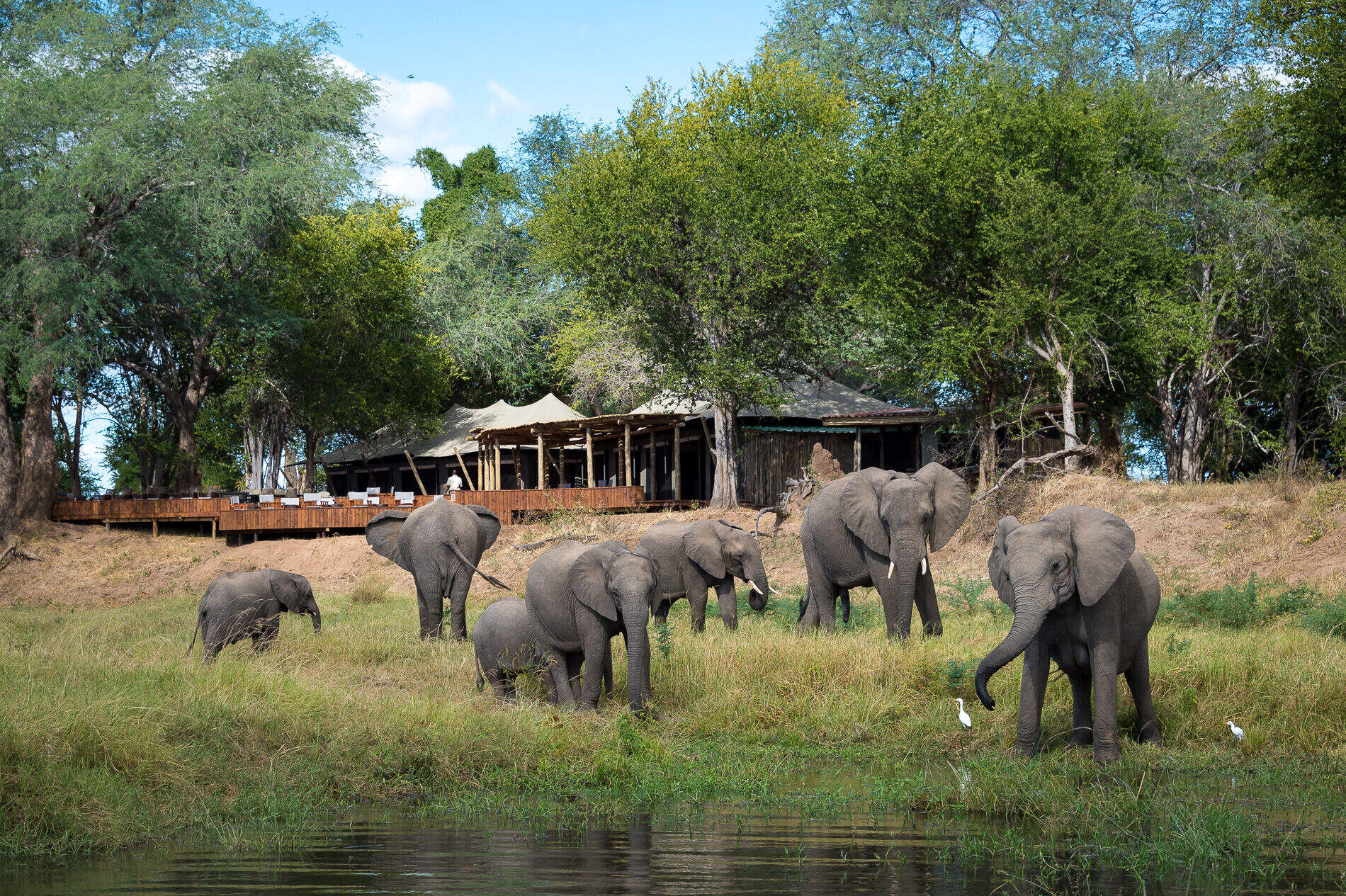
Ruckomechi Camp
In a very scenic spot beside the Zambezi, Ruckomechi is a smart camp offering excellent walking, river safaris, night and day 4WD game drives.
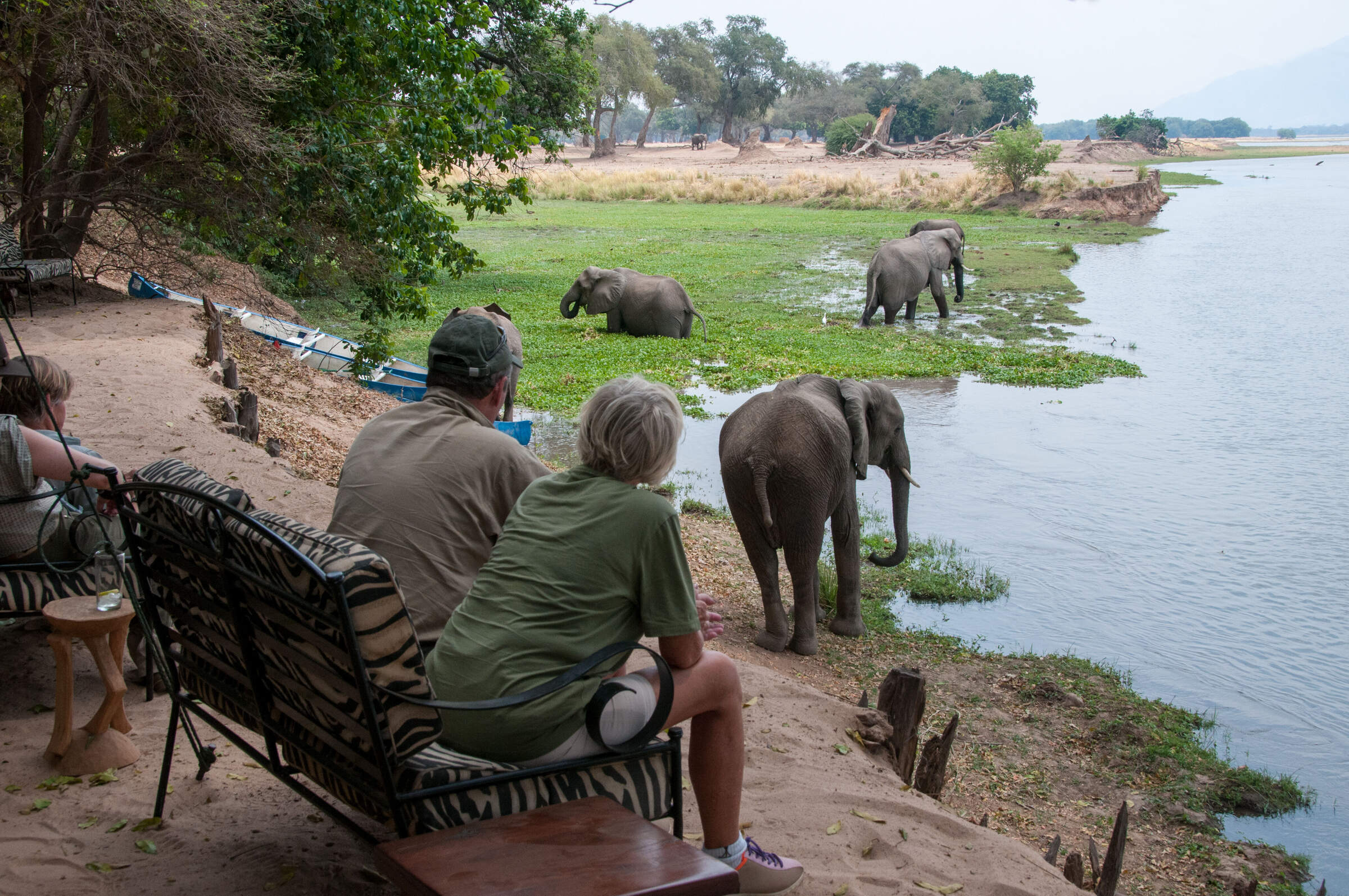
Stretch Ferreira Safaris
Stretch Ferreira Safaris Camp is a small, owner-run camp on the banks of the Zambezi River in Mana Pools National Park, with the emphasis on great guiding.
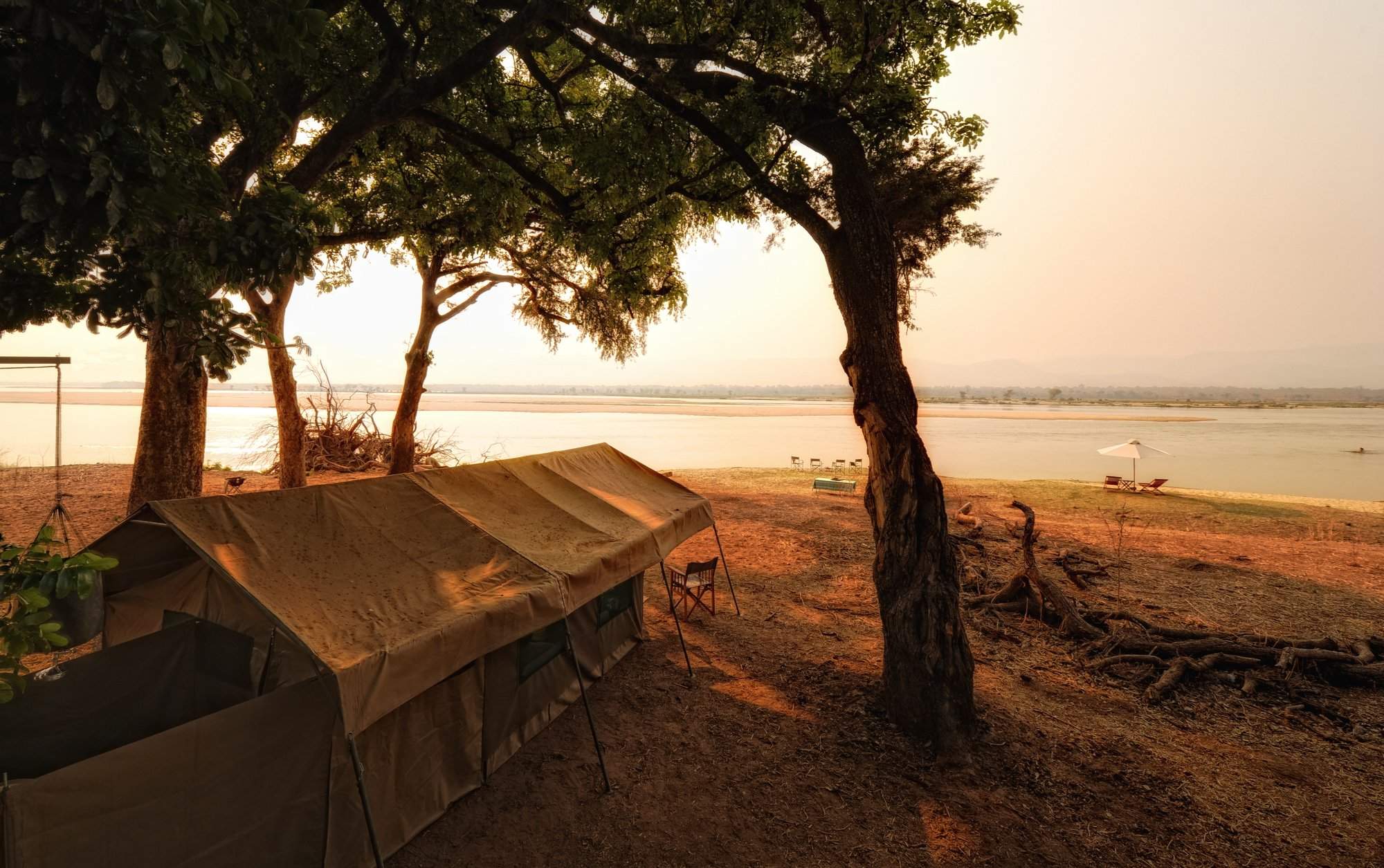
Zambezi Expeditions
Zambezi Expeditions is a simple, semi-permanent camp along the Zambezi River that offers excellent guiding and standards of service.
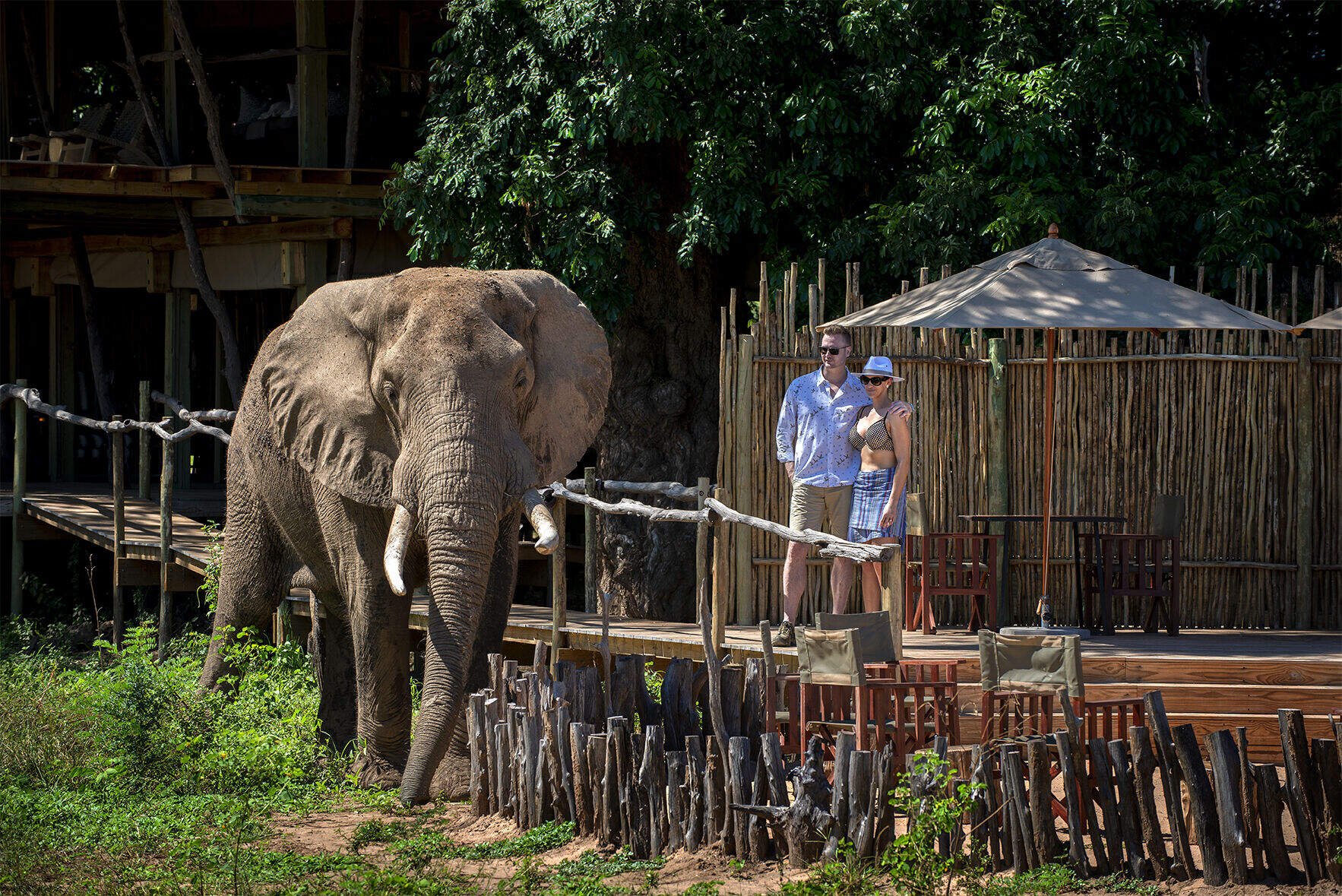
Nyamatusi Camp
Overlooking the Zambezi River, the luxury Nyamatusi Camp occupies a pristine wilderness environment.
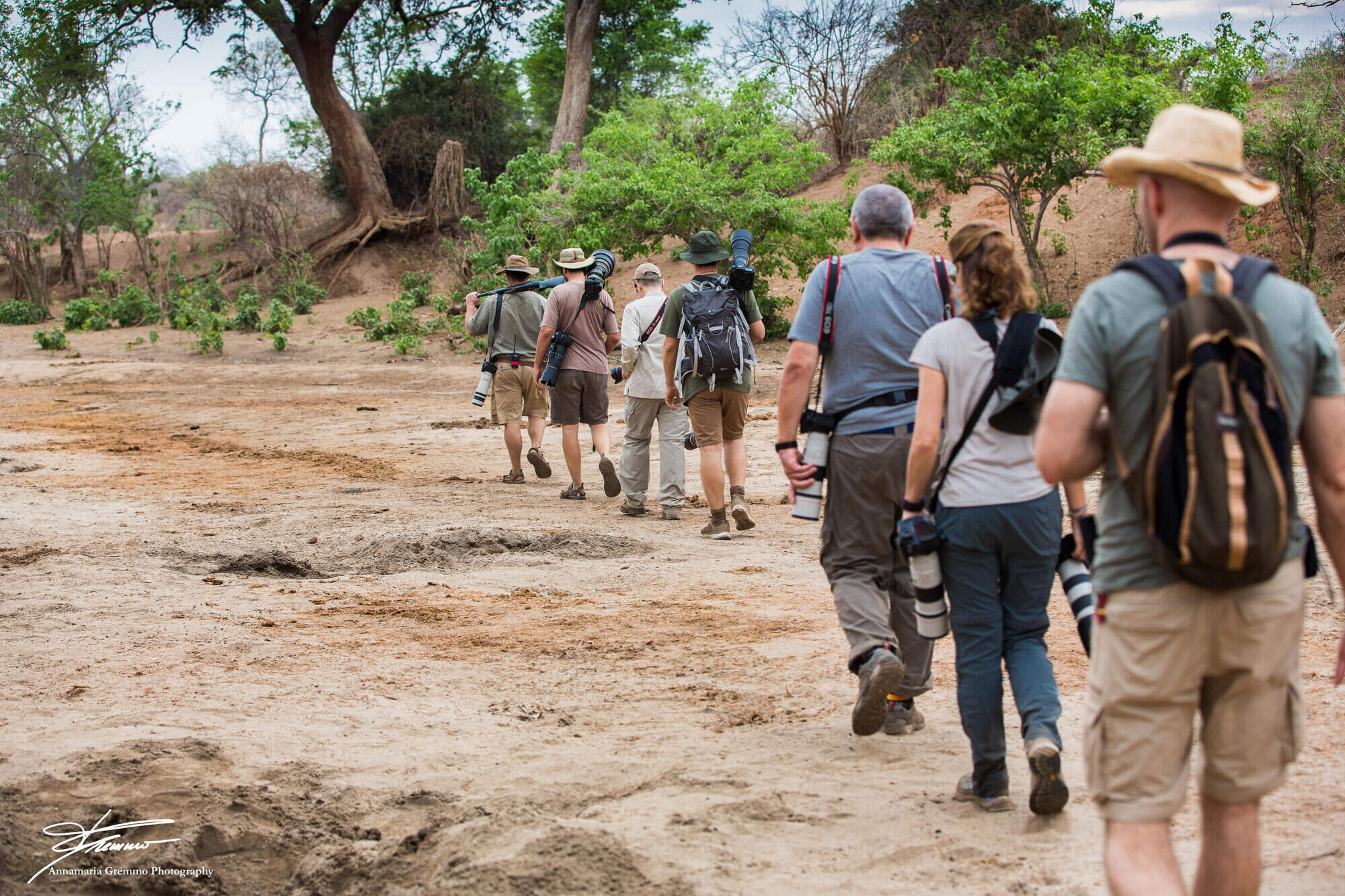
Little Vundu
Closely associated with Vundu Camp, Little Vundu has the same great location and quality of guides, and is occasionally used for private group bookings.
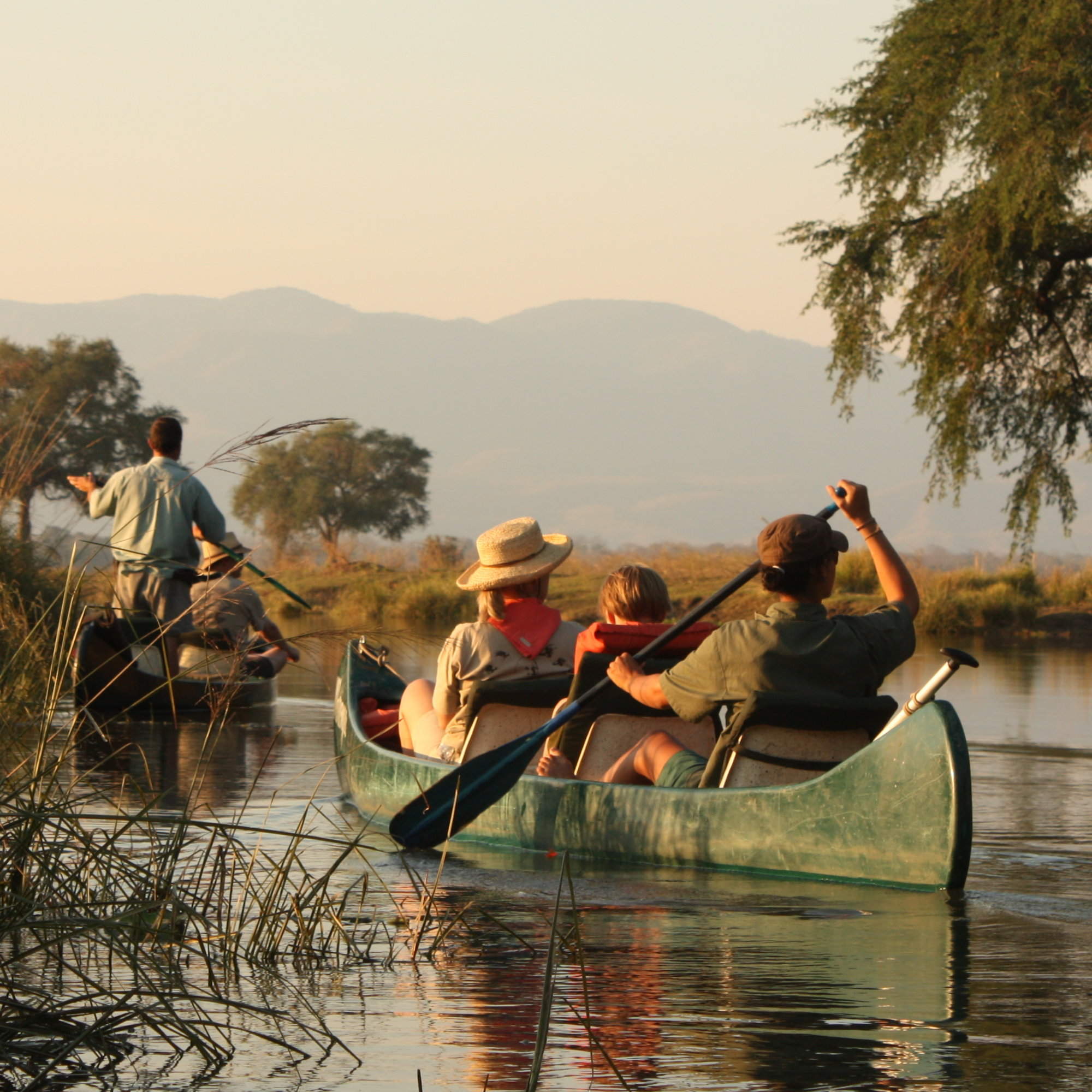
Mana Canoe Trail
The Canoe Trail is a multi-day trip, along the Zambezi with some of the best guides in Africa. Each night you'll camp on the banks of the river.
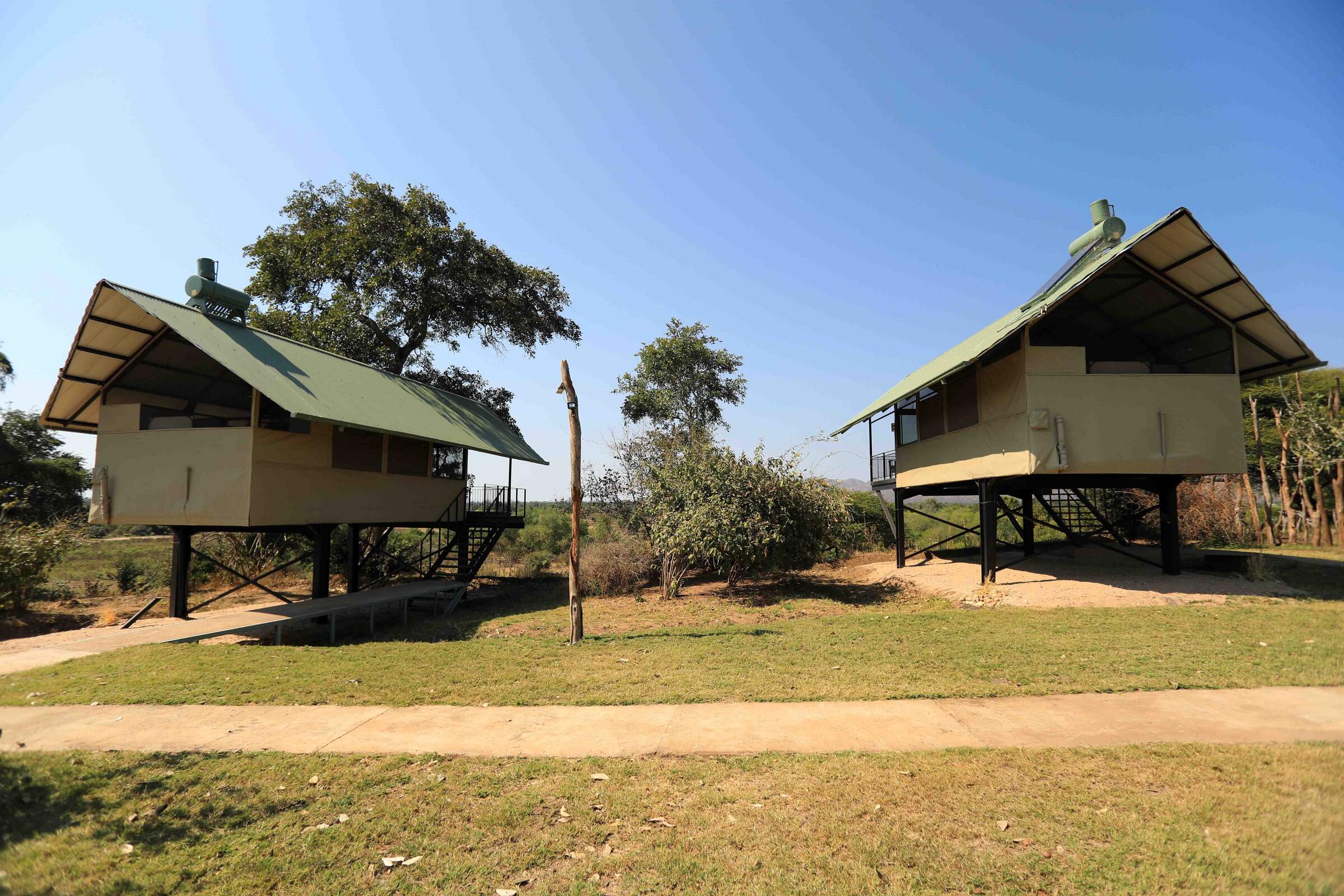
Kavinga Safari Camp
Kavinga is a comfortable tented camp tucked away in a less-visited area of Mana Pools National Park with surprisingly good wildlife and an excellent hide.
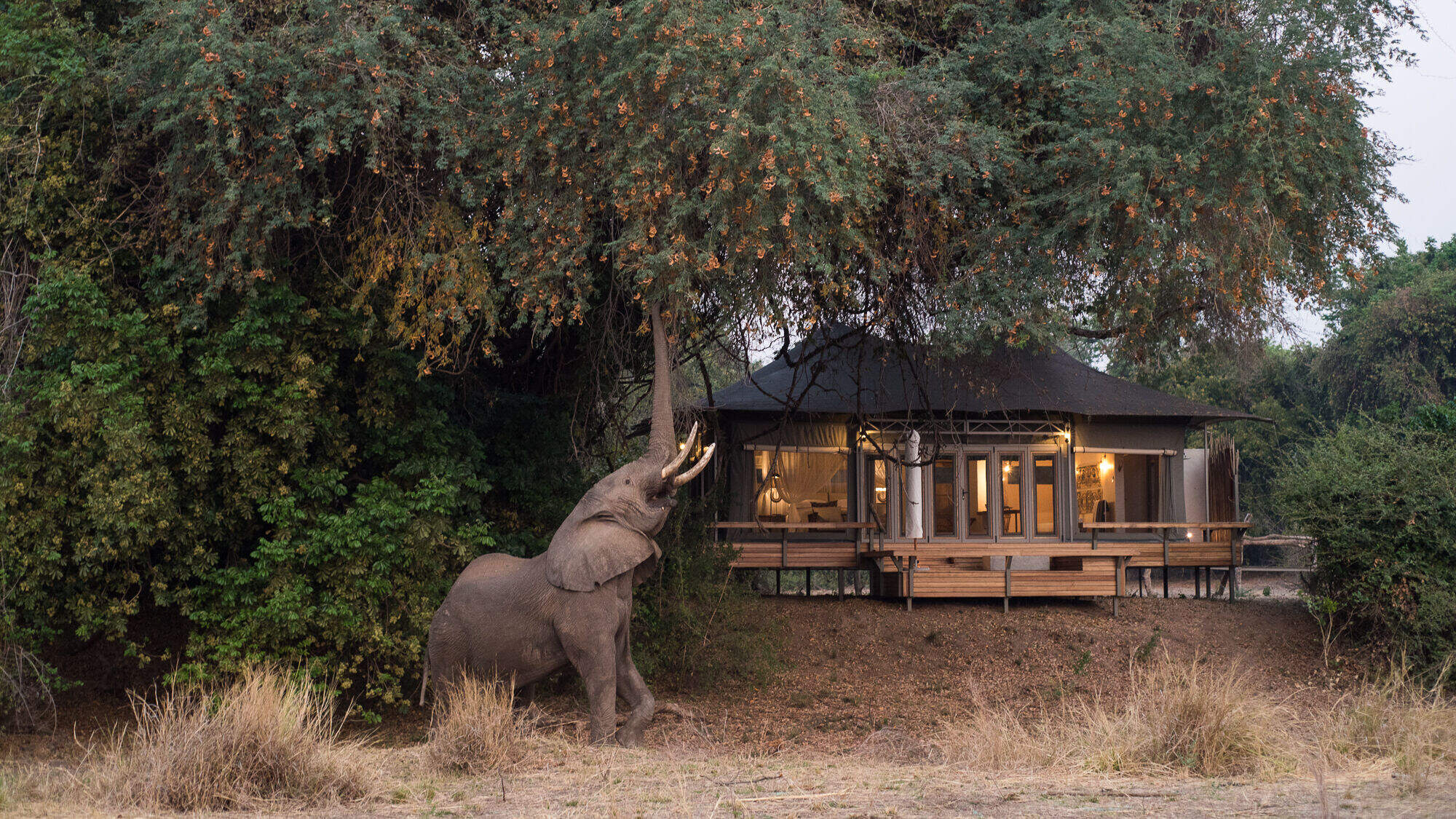
Chikwenya Camp
One of the original properties in Mana Pools area we are excited to be featuring Chikwenya Camp again.
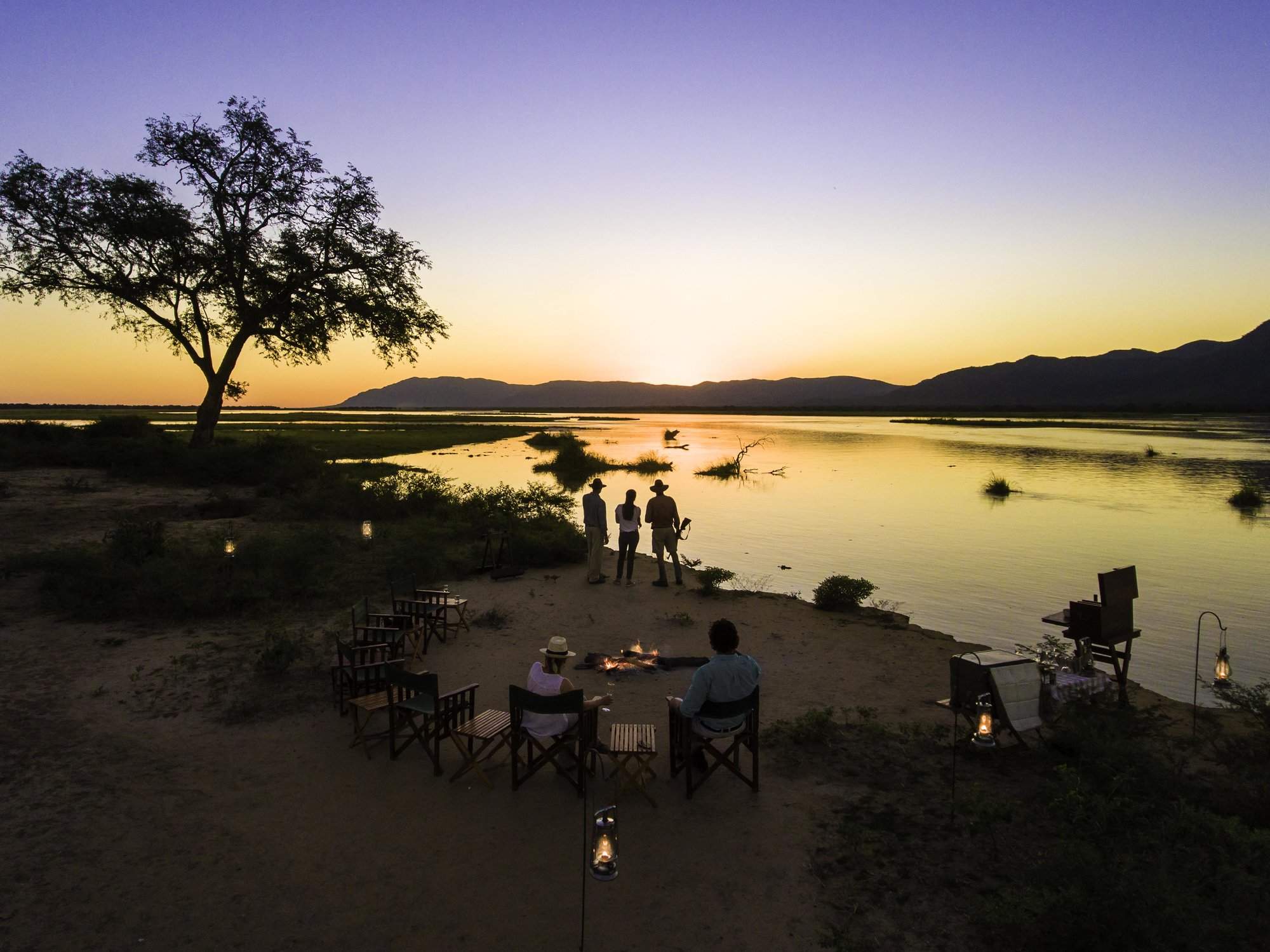
John's Camp
John's Camp is a semi-mobile tented camp offering walking safaris, game drives, and fishing in Zimbabwe's Mana Pools National Park.
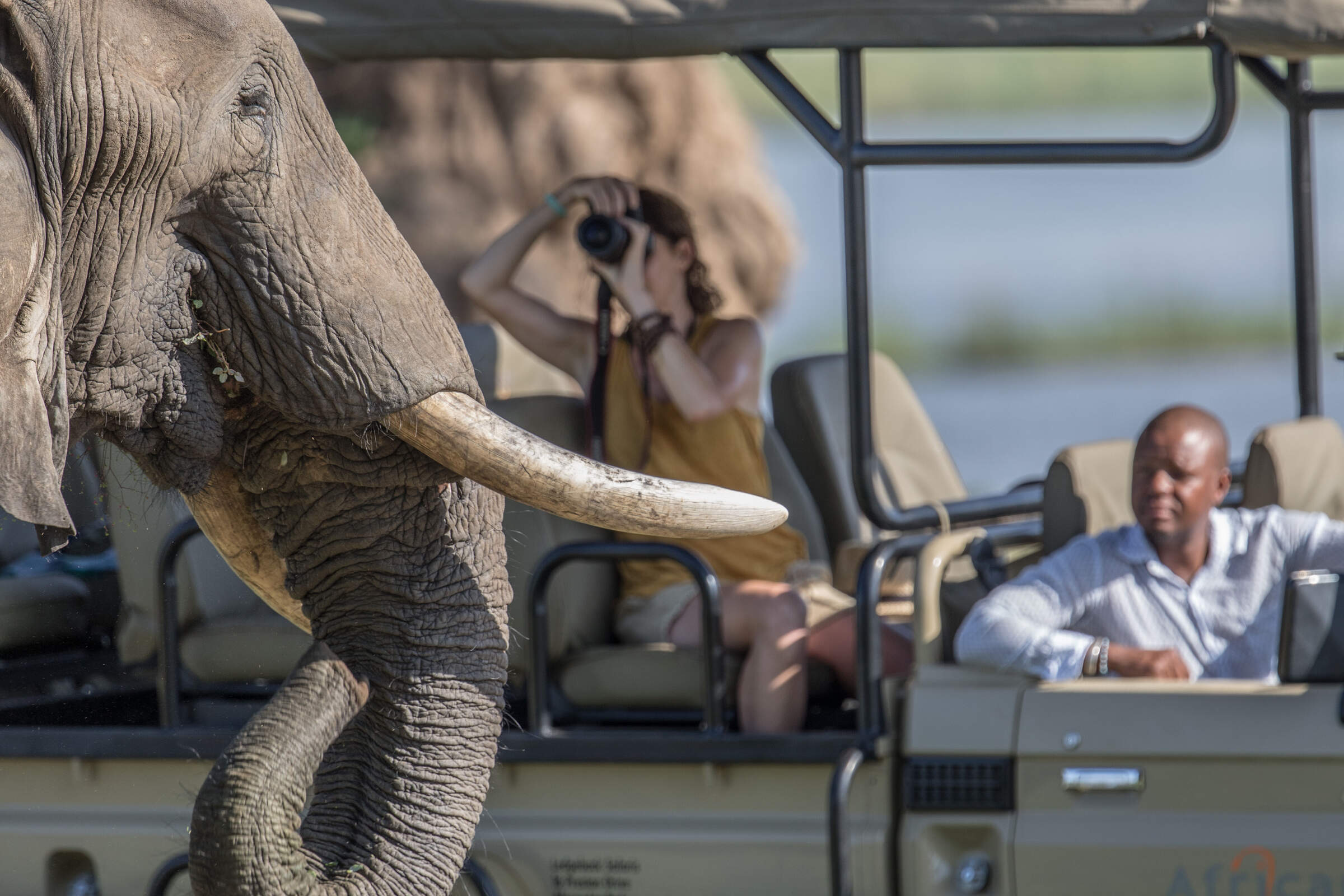
Nyamatusi Mahogany
Nyamatusi Mahogany is a family-friendly, yet remote and luxurious safari camp in Mana Pools National Park.
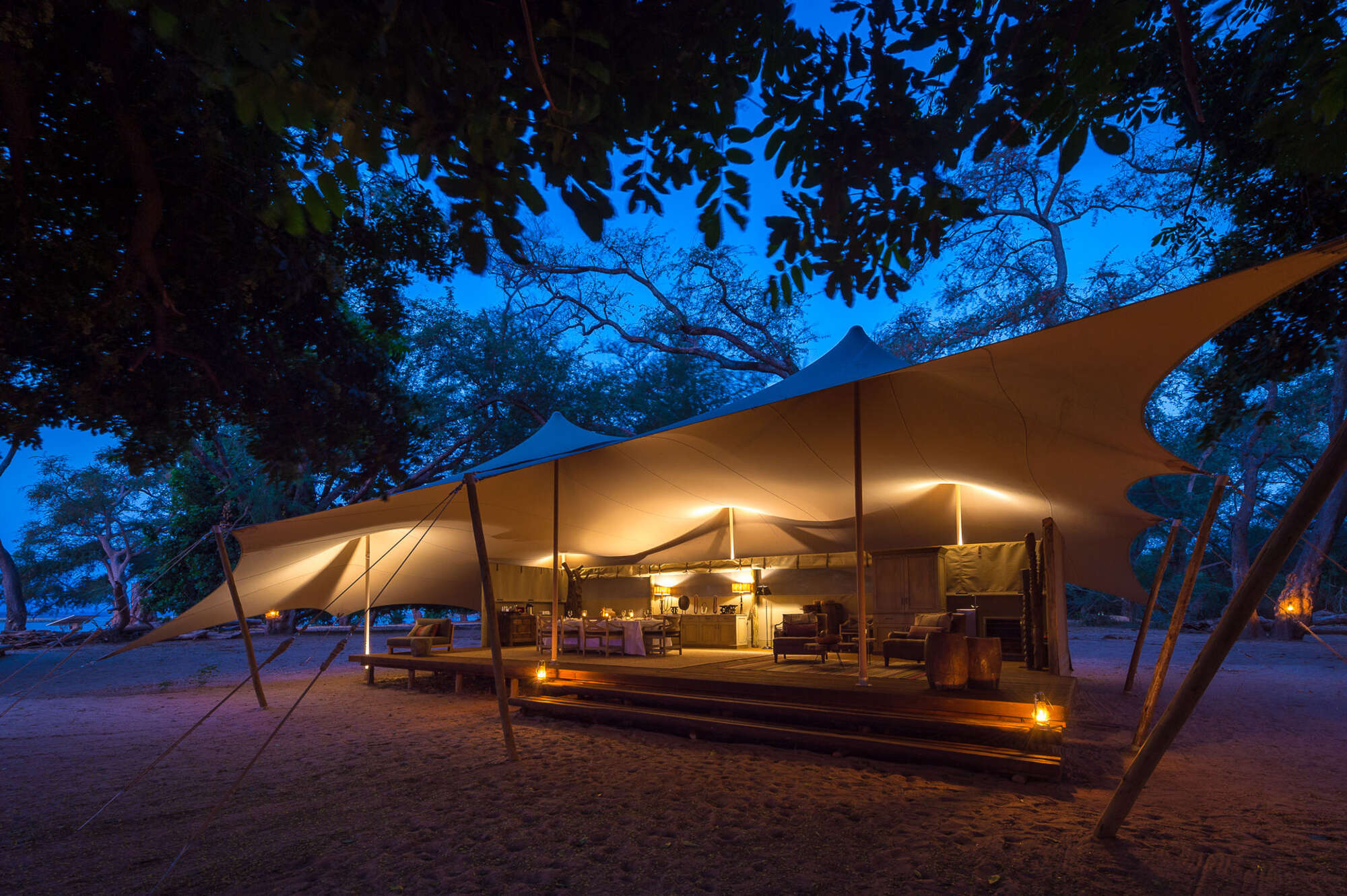
Little Ruckomechi
In a shady spot beside the Zambezi, Little Ruckomechi is a small but luxurious camp offering a reange of activities including walking and canoe trips.
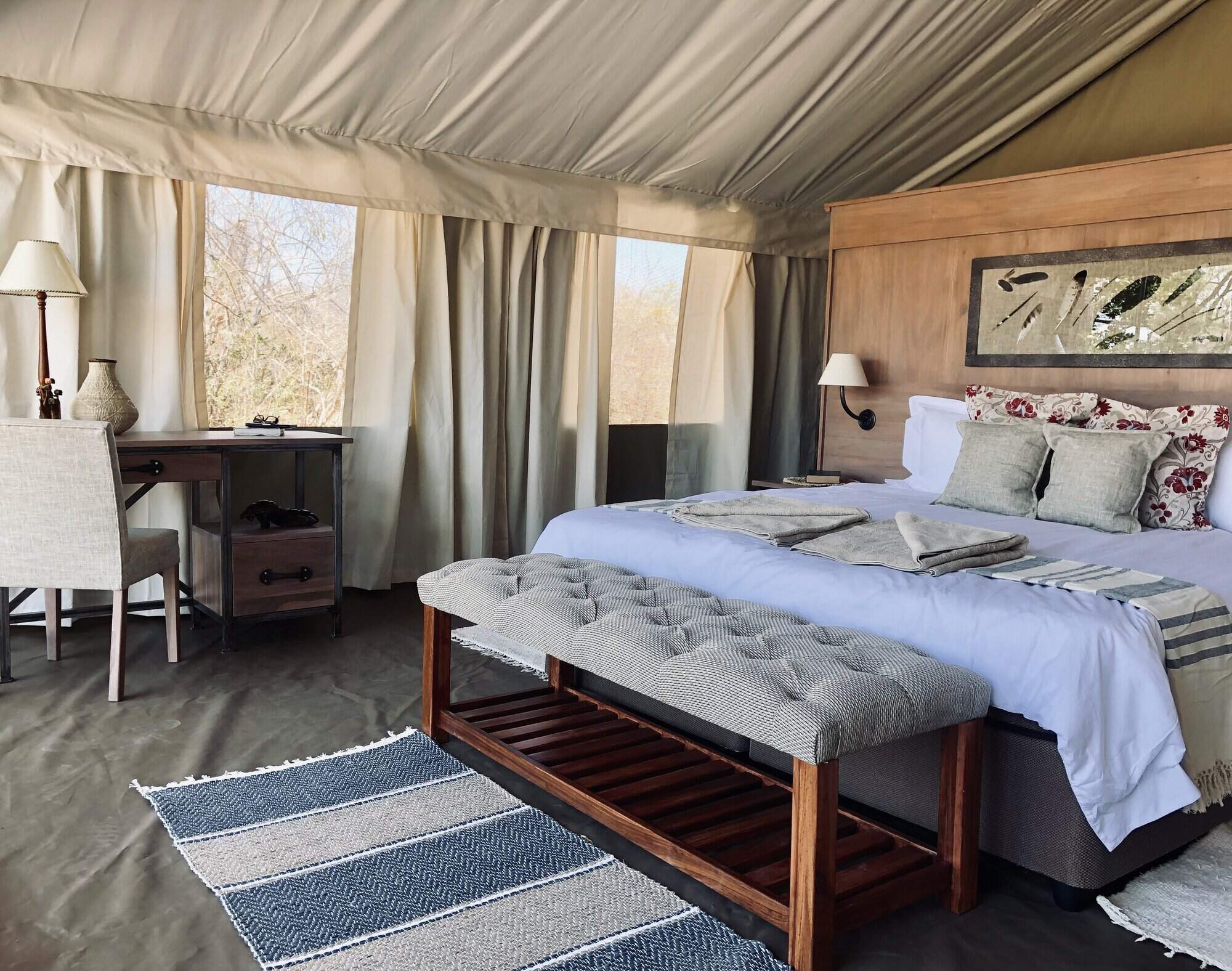
Ingwe Pan Camp
Ingwe Pan Camp is due to open in May and will be located in a remote area in the north of the Mana Pools National Park
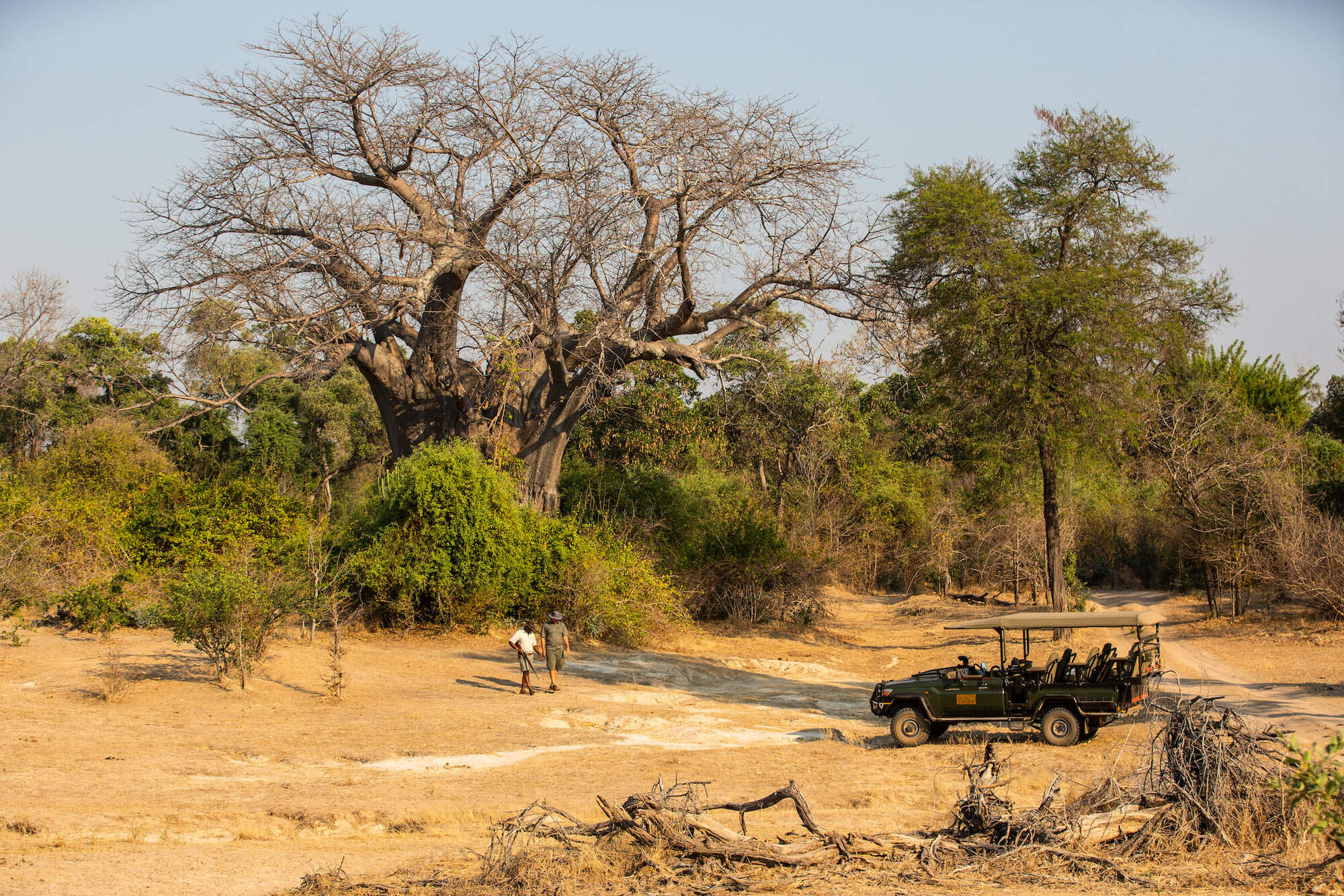
Tembo Plains Camp
Building commenced on Tembo Plains Camp in February 2021. Details are sparce at this stage but we'll update this page once we know more.
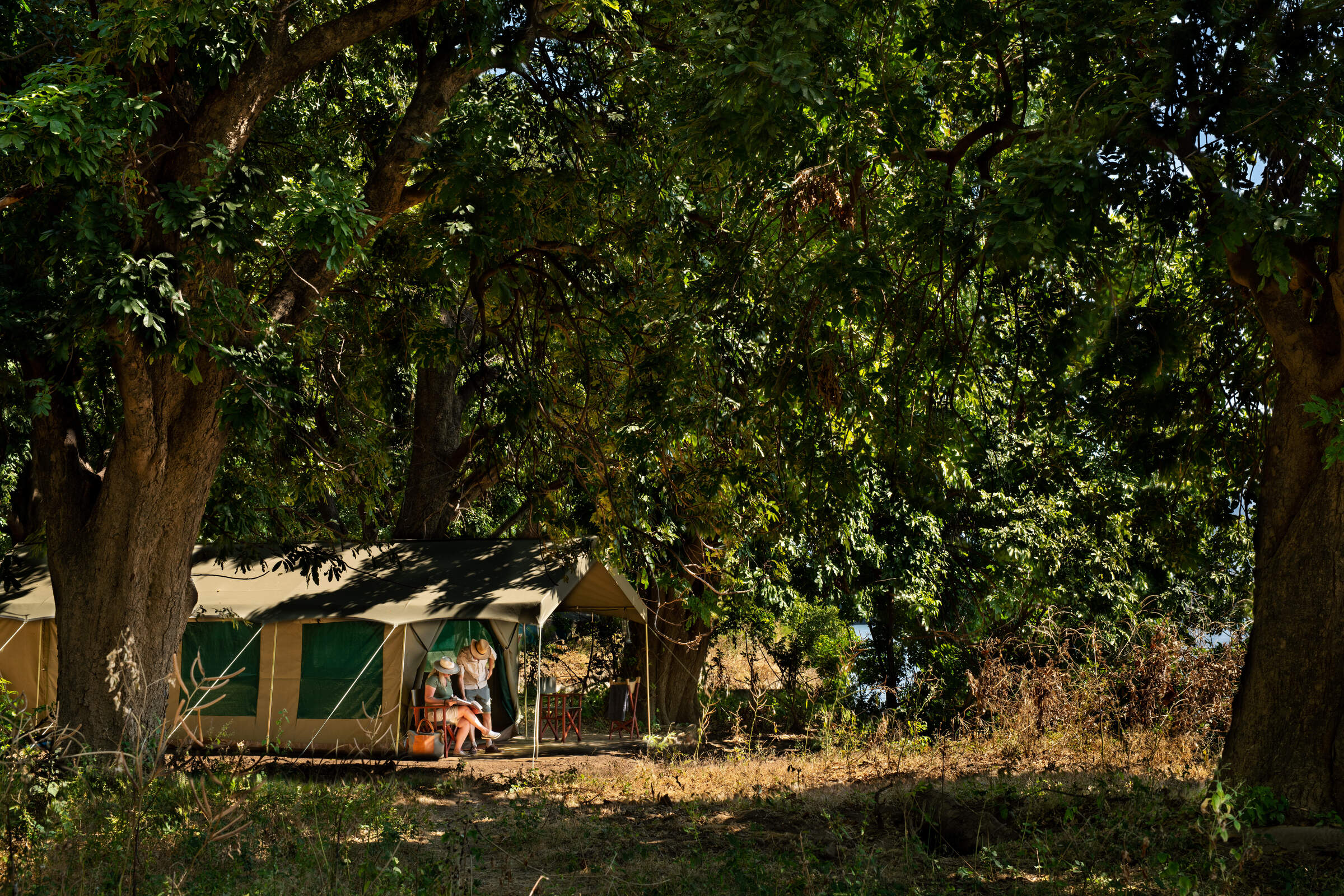
Mana River Camp
Mana River Camp sits on the banks of the Zambezi River, a site formerly occupied by Mwinilunga Camp.
When to go to Mana Pools National Park
Our month by month guide: What it's like to visit Kanga Bush Camp in Mana Pools National Park
Jan
Feb
Mar
Apr
May
Jun
Jul
Aug
Sep
Oct
Nov
Dec
Zimbabwe in January
January falls in the middle of Zimbabwe’s rainy season and is the wettest month of the year. Heavy rainfall occurs most days, flooding seasonal rivers and waterholes, with the occasional sunny spell.
With the high levels of precipitation the wildlife in the national parks becomes widely dispersed, taking advantage of the abundance of food and water, and is easily hidden by the thick, green bush.
While sightings of larger animals are possible, and many species drop their young at this time, game viewing is often sparse. However, many migratory species of bird arrive in Zimbabwe making it a peak month for birding.
The rains create incredibly sticky mud in Mana Pools National Park, preventing access and causing camps to close for the season. The majority of the camps in other parks remain open, with low rates attracting a smattering of visitors.
- Peak of the rainy season: hot & humid with heavy rain most days
- Bush exceptionally thick and green, with poor game viewing
- Species such as impala drop their young
- All camps in Mana Pools closed
- Very few visitors, and low rates at open camps
Our view
A time to avoid if possible
Weather in January
Zimbabwe in February
February remains well within Zimbabwe’s rainy season. Although total rainfall drops, relatively short thunderstorms can still be expected most afternoons. On the plus side, there is a greater chance of some sunshine in-between.
Much of the country remains waterlogged, closing access to Mana Pools and severely restricting walking safaris in other parks. While game drives and canoeing remain an option, the abundance of water disperses animals, and thick grass can make it difficult to spot larger species, but birding remains excellent. Conversely, this is a great time of year to view the landscape, and is excellent for photographers. Sporadic cloud cover and clear air can make for some spectacular sunsets too, particularly over Lake Kariba and the Zambezi River where the reflections off the water add to the beauty.
- Generally wet with frequent thunderstorms & hot humid days
- Poor wildlife viewing due to dispersed animals & thick bush
- Clear air, green landscapes & exceptional sunsets
- All camps in Mana Pools closed
- Very few visitors & low rates at camps that are open
Our view
This is not a great time to visit
Weather in February
Zimbabwe in March
March is the final month of Zimbabwe’s rainy season, when the rains start to trail off and sunny days become the norm. However, some days the clouds can still build, breaking into thunderstorms in the afternoon.
Mana Pools remains closed throughout the month but the majority of camps in Hwange, Matusadona and Gonarezhou remain open. Here, the landscape is green and alive, with migrant species of birds taking advantage of the abundant insect life. Larger animals remain elusive though, and walking safaris remain restricted.
By this time of year, the rains have normally trickled down to the Zambezi River and the flow of water over the Victoria Falls starts to increase, but without kicking up too much spray to obscure the views.
- Last month of the rainy season: hot, humid days with occasional storms
- Lush vegetation means good birding, but poor game viewing
- Views of the Victoria Falls improve
- All camps in Mana Pools closed
- Open camps have few visitors & low rates
Our view
This is not a great time to visit
Weather in March
Zimbabwe in April
April marks the end of Zimbabwe’s rainy season and the end of summer. Clear skies are the norm, with just the occasional shower. Temperatures start to drop, failing to reach 30ºC most days and dropping down to around 10ºC at night.
As the rain fades the landscape starts to dry out. While the vegetation remains thick and green, the soil in Mana Pools dries enough for camps to open, and the only camps to remain closed are the most remote bushcamps in Hwange. Although viewing of larger animals remains tricky, the improved weather starts to draw back visitors, as do prices significantly below those in the peak season.
The Zambezi River and flow of water over the Victoria Falls is at its highest, although large amounts of spray diminish views of the waterfall itself.
- Transitional period, with much lower rainfall & falling temperatures
- Wildlife is still dispersed & hard to see, but sightings improving
- Views of the Victoria Falls often obscured by spray
- Camps in Mana Pools open
- Visitors start to return & camps increase their rates
Our view
A good time to visit, with pros & cons
Weather in April
Zimbabwe in May
The first month in the dry season, May is also Zimbabwe’s first month of winter. If the rains are particularly late in a given year, you may catch the odd shower, but you can expect clear and sunny days the majority of the time. While it’s warm in the daytime, temperatures drop to single digits at night, so bring a warm jumper and gloves for early morning drives.
With the rain having cleared the air, the sky is bright blue, and it’s the best time of year for photography.
Even the most remote camps in Zimbabwe are now open. With the lack of rainfall, vegetation dies back significantly, and seasonal rivers return to sand. Not only does this open up the possibility of walking safaris, but wildlife viewing becomes much more reliable.
- Start of the dry season, with milder days and cold nights
- Game viewing significantly improves as vegetation dies back
- Vegetation starts to turn from green to brown
- Best time for photography with crystal clear air
- Visitors start to return; all camps open & rates increasing
Our view
A very good time to visit
Weather in May
Zimbabwe in June
During June you can virtually be guaranteed of dry and sunny days, although temperatures continue to drop, and can get close to freezing at night in Hwange National Park. Jumpers, jackets and gloves are strongly recommended for early mornings and evenings.
The opportunities for wildlife viewing improve throughout the month as the landscape rapidly dries, and the animals start to gather on the banks of the Zambezi River and around Hwange’s waterholes.
Water levels in the Zambezi River start to drop, reducing the amount of spray kicked up at the Victoria Falls and greatly improving visibility, but still allowing a full curtain of water to cascade over the edge.
- Middle of winter, with night-time temperatures close to freezing
- Game viewing significantly improves throughout the month
- Views of the Victoria Falls are at their best
- Noticeable increase in visitor numbers
- Camps considerably more expensive
Our view
A very good time to visit
Weather in June
Zimbabwe in July
July sits in the middle of Zimbabwe’s dry season. Although it’s warm at midday, temperatures are generally cold and in Hwange it’s been known to drop below freezing at night, with the lower-altitude Mana Pools feeling a bit warmer.
With wildlife clustering around the few remaining waterholes, sparse vegetation, and some of the best views of the Victoria Falls, this is one of the most popular times to travel, with camps charging peak season rates to reflect this. That said, visitor numbers to the country in general remain low, and outside of the Victoria Falls it’s rare for any areas to feel crowded.
- Middle of the dry season with almost no chance of rain
- Clear sunny days, but very cold nights
- Wildlife viewing good; game drives and walking safaris unrestricted
- Views of the Victoria Falls at their best
- Camps charging peak season rates
Our view
A very good time to visit
Weather in July
Zimbabwe in August
While August is the end of winter and temperatures are starting to creep up, mornings and nights are still cold, and game drives in open vehicles can feel particularly chilly. Well into the dry season, the landscapes will have mostly transformed from green to brown and wildlife viewing in Zimbabwe’s national parks is approaching its best. Due to dust kicked up into the atmosphere and smoke from bush fires you may start to notice a haze on the horizon, but this doesn’t significantly impact photography.
August is one of the most expensive months, and the pleasant weather and decent game viewing attracts lots of visitors. While the national parks rarely feel crowded, Victoria Falls accommodation can sell out a year in advance.
- Warm, sunny days but cold mornings & nights; almost no chance of rain
- Wildlife viewing nearly at its best
- Landscape turns brown, & an atmospheric haze develops
- All camps charging peak season rates
Our view
Fantastic: the very best time to visit
Weather in August
Zimbabwe in September
Temperatures in September rarely drop below 15ºC, but are yet to reach the oppressive highs of summer. It will normally have been five months since the last drop of rain, so antelope and elephants cluster around whatever water remains, with predators never too far away.
The landscape is very brown, and the haze building on the horizon takes some of the colour out of the sky, so while animal subjects are plentiful, the background is not ideal for photography.
The combination of incredible wildlife viewing, hot and sunny weather, and cheaper flights outside of the school holidays make this the most popular time of year to travel, and availability at the camps can become limited up to a year in advance.
- The best month for weather, with a pleasantly warm temperature range
- One of the best months for game viewing
- Victoria Falls starting to dry but still impressive on Zimbabwean side
- All camps are charging peak season rates
- Most popular time to travel, & space can be limited
Our view
Fantastic: the very best time to visit
Weather in September
Zimbabwe in October
October is the last month of the dry season with little chance of rain but building humidity. While the higher elevation of Hwange National Park limits temperatures to the 30s Celsius, they can easily top 40ºC in Mana Pools.
With little vegetation or water, wildlife is drawn to the few remaining water sources and viewing is at its best; visitors who brave the heat can be rewarded with some exceptional sightings, although haze in the air diminishes photos. Maximum visibility and dense wildlife concentrations can also make for very rewarding walking safaris, although the heat can make them uncomfortable.
Water levels in the Zambezi at the Victoria Falls drop significantly, and large stretches of the waterfall are a dry cliff-face – although it never dries completely. Camp rates remain at their peak, but visitor numbers drop as people avoid the heat.
- Last month of the dry season; very hot with building humidity
- Wildlife viewing at its very best
- Dust & smoke in the air diminish photographic opportunities
- Victoria Falls starting to look very dry
- Camp rates remain at their peak
Our view
A very good time to visit
Weather in October
Zimbabwe in November
November is a transitionary period, with high temperatures and humidity. While they can’t be predicted with any precision, the first rains normally arrive halfway through the month, in the form of thunderstorms lasting a few hours each day.
Early November is a popular time to travel as the camps drop their rates, so if you’re lucky you can get peak-season game viewing at low-season rates. This is a gamble though as if the rains do arrive, animals are no longer limited to a few dangerous waterholes and will disperse into the bush. While all the camps in Mana Pools intend to remain open, the rains can make the airstrips unusable so you may find yourself moved to a different park, a risk that increases through the month.
- Typically the start of the rains in Zimbabwe
- Temperatures & humidity levels remain high
- Wildlife viewing rapidly diminishes as the rains arrive
- Camps remain open, but risk early closure in Mana Pools
- Much cheaper time to travel as camps drop their rates
Our view
A good time to visit, with pros & cons
Weather in November
Zimbabwe in December
By December the rainy season has begun in earnest; this is one of the wettest months in Zimbabwe, with heavy thunderstorms most afternoons and occasionally continuous rain for a couple of days. While temperatures start to cool down the high levels of humidity can make the heat feel more oppressive.
With the rains comes an explosion of green growth, and the dust and smoke are washed out of the air. The resulting scenery – with the occasional bright blue skies – can be fantastic for photographers. Thick vegetation and plentiful water makes viewing of larger animals tricky, but with migratory species arriving the birding is at its best.
All camps in Mana Pools and the remote Hwange camps close, with those remaining open charging their lowest rates.
- One of the wettest months in Zimbabwe
- High temperatures & levels of humidity
- Wildlife viewing poor, but birding good
- Lush green landscapes & clear air; great for landscape photography
- All camps in Mana Pools closed
Our view
This is not a great time to visit
Weather in December

Looking for inspiration on where to travel next?
Visit our trip chooser to explore your options and find inspiration for your perfect African adventure
Inspire me